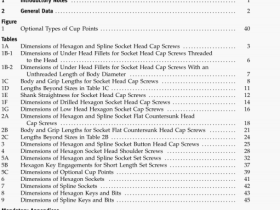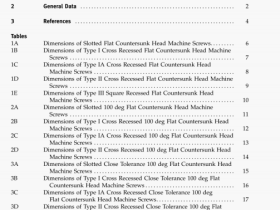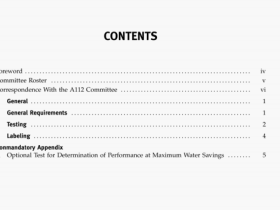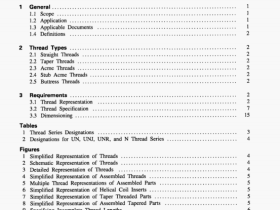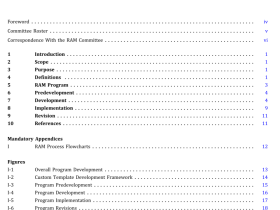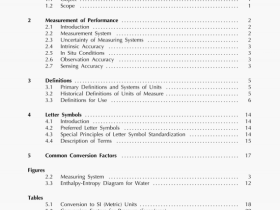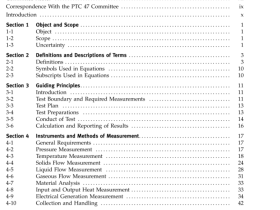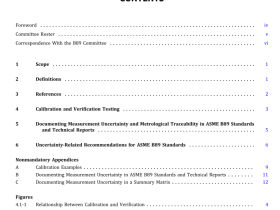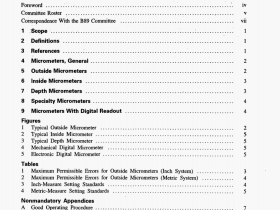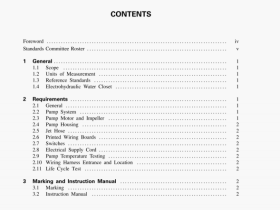ASME B1.20.2M-2006 pdf download

ASME B1.20.2M-2006 pdf download.Pipe Threads,60 deg, General Purpose.
7 GAUGING OF TAPER PIPE THREAD, NPT
7.1 Gauging External Taper Threads
In gauging external taper threads the L1 ring gauge, Fig. 6, is screwed hand-tight on the pipe or external thread. The thread is within the permissible tolerance when the gauging face of the working ring gauge is not more than one turn, large or small, from being flush with the end of the thread, as indicated in Fig. 6.
7.2 Gauging Internal Taper Threads
In gauging internal taper threads the L1 plug gauge, Fig. 4, is screwed hand-tight into the fitting or coupling. The thread is within the permissible tolerance when the gauging notch of the working plug gauge is not more than one turn, large or small, from being flush with the end of the thread, as indicated in Fig. 7.
7.3 Gauging Practice
7.3.1 Seating of Gauge. In gauging pipe threads it is common practice to tap or rap the part to assure proper seating of the gauge in or on the product thread. However, it is first necessary to clean both the gauge and the product threads so that they are free of chips, burrs, abrasives, or other foreign materials.
7.3.2 Supplemental Gauging. Gauging of both internal and external threads by use of the L1 plug and ring gauges, illustrated by Figs. 6 and 7, serves as functional verification of hand-tight L1 engagement threads. However, conformance to this Standard requires that all basic design dimensions be met within applicable tolerances including extension of the thread elements to provide for wrench-tight makeup. Therefore, in controlling manufacturing practices or as otherwise required, additional methods of measuring or gauging may be employed to supplement L1 gauging. If additional methods of gauging must be employed to evaluate conformance to the design dimensions, they shall be agreed upon by the supplier and the purchaser. See sections 6, 7, and 8 for gauges and gauging requirements.
NOTE: Nonmandatory Appendix A provides information on inspection of pipe threads using the Turns of Engagement method of gauging.
6.2.2 Working Gauges. Each set of working gauges consists of an L1 taper-threaded ring gauge and an L1 taper-threaded plug gauge and is used for checking the product. These gauges are made of hardened steel or equivalent material to dimensions given in Table 5 (see para. 6.3.2 for tolerance). In locating the basic notch of the plug gauge, the plane of the notch should intersect the crest of the thread.
6.3 Gauge Tolerances
In the manufacture of gauges, variations from basic dimensions are unavoidable. Furthermore, gauges will wear in use. In order to fix the maximum allowable variations of gauges, tolerances have been established. See Table 6 and para. 6.3.2.
6.3.1 Master Gauge Tolerances. The set of master gauges should be made to the basic dimensions as accurately as possible, but in no case shall the cumulative variation exceed one-half of the total cumulative tolerance in Columns 13 and 14 of Table 6. Each master gauge should be accompanied by a record of the measurement of all elements of the thread and the standoff of master plug to master ring (large end of ring gauge to basic notch of plug gauge).
6.3.2 Working Gauge Tolerance. All gauges applied to the product thread, whether in manufacture or inspection, are designated as working gauges. All working gauges should be made to the basic dimensions specified in Table 7 and within tolerances specified in Table 6. The maximum wear on a working gauge shall not be more than the equivalent of one-quarter turn from its original dimensions, as determined by its master gauge.
6.4 Relation of Lead and Angle Variations to Pitch Diameter Tolerance of Gauges
When it is necessary to compute from measurements the decimal part of a turn that a gauge varies from the basic dimensions, Tables 7 and 8 should be used. Table 7 gives the correction in diameter for lead variations and Table 8 gives the correction in diameter for angle variations. These corrections are always added to the pitch diameter in the case of external threads and subtracted in the case of internal threads regardless of whether the lead or angle variations are plus or minus.
The diameter equivalent for lead and angle variations.
